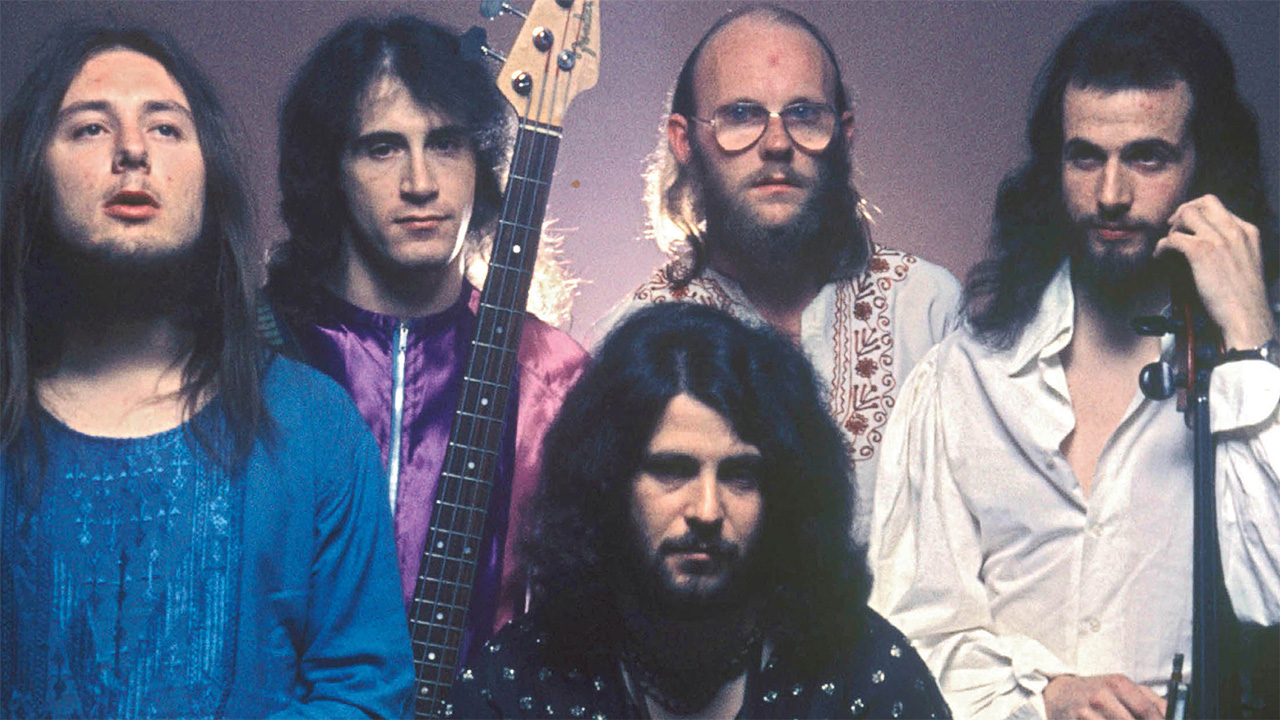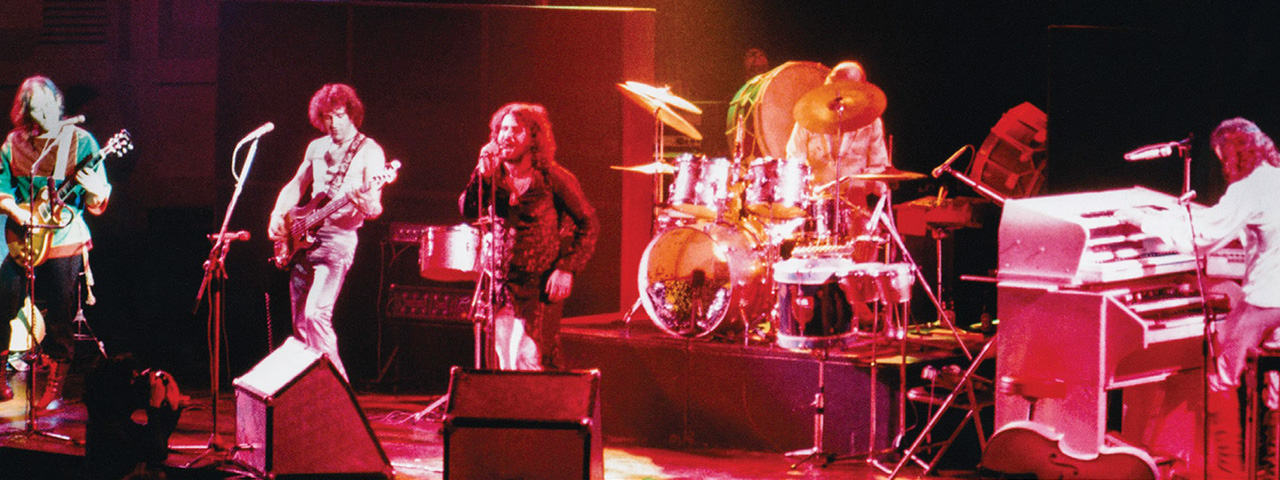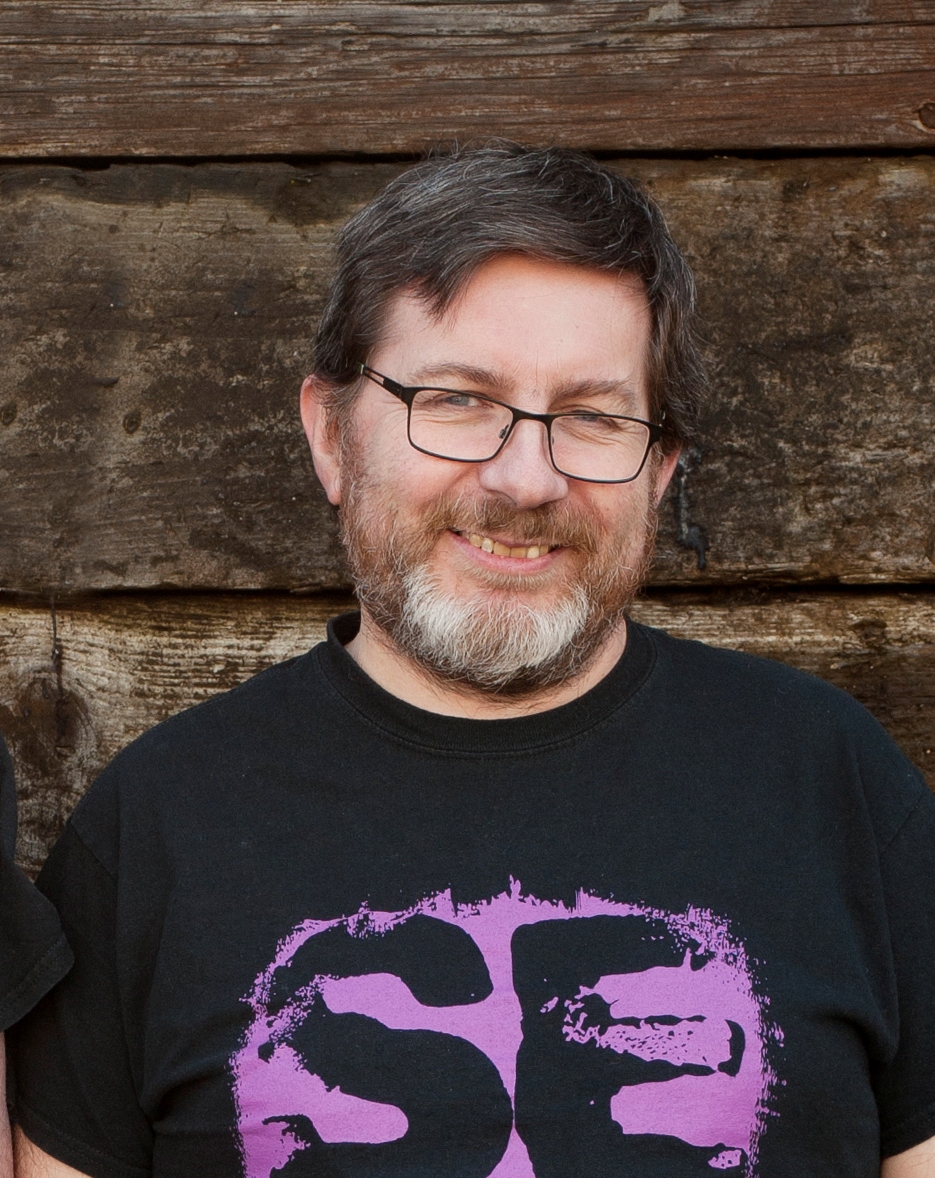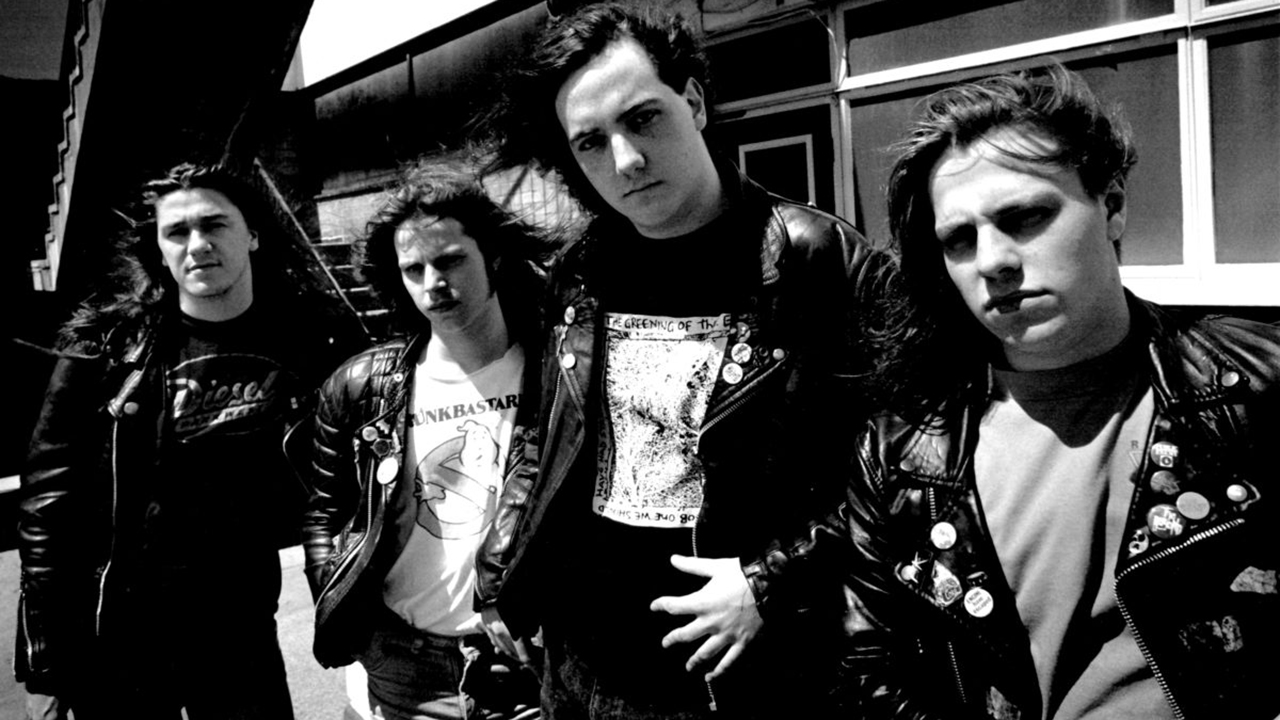“We put full-sized speakers at the back of the hall for quadraphonic sound. Someone walked off with one! I’ve no idea how – it’s not like they put it in a pocket”: The story of Gentle Giant’s only live album, Playing The Fool
Presenting their concert experience on record was a steep challenge in 1976. Now they’ve reconstructed the tapes to make it feel like you’re there, complete with heckling

In 1977 Gentle Giant released their only authorised concert album, Playing The Fool – The Official Live. Nearly 50 years later it’s been reimagined into an immersive experience that reproduces the entire concert as if the listener were in the audience. Derek Shulman, Gary Green, Kerry Minnear and John Weathers reflect on the original’s legacy.
In September 1976 Portsmouth’s Gentle Giant were on tour in support of their latest album, Interview. It had been a busy decade, with eight records released in a six-year period alongside a frantic touring schedule, especially in North America and mainland Europe. Even so, as guitarist Gary Green remembers, it wasn’t quite as busy as the band wanted.
“I felt we weren’t doing enough,” he says. “I suppose it was youthful energy. I wish I still had the energy to do all that we did then right now!”
During that busy period – which their last tour of any sort on home soil – their modest UK following had been supplanted by a larger fanbase in Europe. “We were playing large venues over there by that time,” Derek Shulman remembers.
A jaunt during the 1976 Bicentennial celebrations in the USA had seen them paying their own shows and also taking part in outdoor concerts headlined by Yes, including the massive Anaheim and Balboa Stadiums in California. “Those shows were incredible,” says John Weathers. “Each of the undercard bands had their own little pockets of support in the stadium, including us.”

When Gentle Giant returned to Europe in the autumn, it was the perfect time to get some live performances down on tape. “We were at our zenith as far as being a live attraction in both North America and Europe,” Shulman says. “I think our playing had matured to a point where we felt very comfortable doing a live album.
Several factors were involved in the decision. “I’d be lying if I said the success of Frampton Comes Alive! didn’t affect our decision,” admits Weathers.
Sign up below to get the latest from Prog, plus exclusive special offers, direct to your inbox!
They also felt the need for a stopgap before their next studio project. “We finished Interview and we thought that we needed to do something different,” Gary Green says. “We didn’t yet know what the next album should be.” And there was pressure to put out something official in response to bootlegs, which were doing good business.
So the band hired Jethro Tull’s mobile studio and recorded four shows in Düsseldorf, Munich, Paris and Brussels, with their live sound engineer Paul Northfield at the helm. They picked the best performances, including an impromptu – if not entirely unrehearsed – acoustic rendition of jazz standard Sweet Georgia Brown, the result of a power issue sent keyboardist Kerry Minnear’s rig up in flames at the Brussels show.
Playing The Fool was released in 1977 and remains a fine testament to the quality of the band’s live show. Unlike many love albums of the era, there are no overdubs; instead it presents the majority of the live set. But it’s missing all but one of the songs from Interview.
“I think the band was at its most mature stage of its existence,” says Shulman. “The album captures what we had become after going through all the machinations of Phil [Shulman] leaving, and going through a couple of drummers. I think it’s a great checkmark in the history of the band.”
Fast forward to 2025 and new history is being made. The recently-released Playing The Fool: The Complete Live Experience comes in a multitude of extended formats, including Blu-ray with Atmos and 5.1 mixes, allowing the listener to really immerse themselves in the remastered and remixed recordings.
Shulman explains: “It was initiated by our archivist, Dan Bornemark, a friend for many years. He suggested that, instead of just remixing the old album, how about doing the whole show as it was on the day at the venue, including the ambience onstage and talking to the audience?
You can hear people behind you heckling! It’s like you’re in the middle of the crowd
Kerry Minnear
“In 5.1 and Atmos you can actually hear all that – it really sounds like you’re there. So it was his idea to include the songs from Interview that we weren’t able to put on the original album, because we only had four sides of vinyl to play with.”
As great as the original release was, this updated version, painstakingly pieced together using modern technology to give separation to each instrument, is an astonishingly accurate reproduction of a show by one of the great live bands at their most impressive.
“We were entertaining as well as being musical,” says Shulman. “I think that comes across. We were having fun.” The sheer enthusiasm with which the band launch into the drum freak-out at the end of So Sincere is a testament to that.

As well as remixes of the originals, other tracks are replaced with alternate versions that contain subtle differences in the performances. Hearing these more immersive live songs had a profound effect on Minnear. “I was overwhelmed – I’d not heard Atmos before, and we were presented with a lot of material that was new to us.
“There are takes that are different to the original, and you can also hear people behind you heckling! It’s like you’re in the middle of the crowd, and the clarity of the music is astonishing. Dan kept the instruments in front of the listener, but spaced out onstage as if you were actually there.”
A Gentle Giant show in 1976 was a beautifully structured journey through the band’s history to that point. All eight albums were represented, although the band’s notorious second release, Acquiring The Taste, only got a brief look-in; and fans of Three Friends had to wait to the encore for Peel The Paint in a medley with I Lost My Head.
I learned the vibraphone part with Kerry standing behind me. Complex percussion was difficult – I’m a rock’n’roller at heart
John Weathers
As well as restoring Shulman’s between-song banter and presenting the set in its original running order, the enhanced version adds the title track from Interview and – perhaps more importantly – Timing, which leads into Ray Shulman’s violin solo, making full use of the band’s live quadraphonic system.
Weathers remembers Ray making use of technology invented by engineer Paul Northfield, allowing the musician to trigger a polyphonic canon-style accompaniment to himself, now accurately reproduced in the new mixes. “His antics were remarkable, including rolling around on the floor,” recalls Weathers.
“We’d put full-sized PA speakers at the back of the hall to achieve the quadraphonic sound. At one of the US shows someone walked off with one of them! I’ve no idea how they achieved that – It’s not like they could put it in a pocket.”
A full Gentle Giant show at the time included an impressive array of gear, with Minnear appearing from behind his relatively modest keyboard rig to play both cello and vibraphone, And he wasn’t the only member with wide-ranging abilities. “All the Shulmans played an astonishing number of instruments,” he recalls.
Ray Shulman played guitar and trumpet as well as bass and violin, while Green played recorder during the showstopping re-arrangement of On Reflection from the Free Hand album. The piece, with its entirely revised structure, is typical of their approach to their music.
“At college I learned how counterpoint was used in the Baroque period to combine melody lines,” Minnear says. “I applied the principles in a modern way for the band. I just love the way it gives you the harmony, but not in a single block.”
Trying to overcome feedback to be loud enough when you’ve got John Weathers playing behind you is difficult!
Gary Green
While Weathers comes across as a natural on the vibraphone during the piece, he admits: “I learned note by note with Kerry standing behind me! I can get a tune out of most things, but complex percussion was a bit more difficult – I’m a rock’n’roller at heart.”
The number of acoustic instruments that needed microphones often proved a challenge. “Transducer pickups had just been invented, but we couldn’t afford them,” Green says. “So we stuck with standard microphones. Trying to overcome feedback to be loud enough when you’ve got John Weathers playing behind you is difficult, to say the least!”
The extensive rearrangements and medleys in the show stand out; but Prog wonders if it ever alienated fans who might have expected to hear faithful album arrangements. “We just didn’t care,” says Green. “And not all of Giant’s music could be reproduced very well live. We’d have to leave out those bits.
“But also, a song like Proclamation from The Power And The Glory lent itself very well to having Valedictory tagged on the end, as it’s a reprise. Musically it makes absolute sense – plus it makes for a really hard-rocking climax.”
After releasing the original version of Playing The Fool, their next move was to record 1977’s The Missing Piece, a partially successful attempt at shorter-form material. It also spawned the band’s last live performance in the UK, as part of the BBC’s Sight And Sound broadcasts. After a hiatus that caused a cash-strapped Green to seek employment working on the Isle of Wight ferry, Gentle Giant continued with short-form music on the patchy Giant For A Day! released the following year.
Something clicked when I joined. We were a band of brothers
John Weathers
They relocated to the USA, where Green and Shulman live to this day, for the fabulous but mistimed swansong Civilian. They called it a day after a final US jaunt in 1980. They never reformed; but it’s clear that a great deal of love still exists between them. The same affection is applied to Ray Shulman, who died in 2023, and whose legacy as a bassist is sometimes overshadowed by his multi-instrumental abilities.
“Thankfully, we’re still on great terms and we treat each other as family,” Derek Shulman says.
Weathers adds: “Something clicked when I joined. We were a band of brothers – we loved each other. It’s as simple as that.”
Stephen Lambe is a publisher, author and festival promoter. A former chairman of The Classic Rock
Society, Stephen has written ten books, including five about music. These include the best-selling
Citizens Of Hope And Glory: The Story Of Progressive Rock and two books about Yes: Yes On
Track and Yes In The 1980s. After a lifelong career in publishing, he founded Sonicbond in
2018, which specialises in books about rock music. With Huw Lloyd-Jones, he runs the Summer’s End
and Winter’s End progressive rock festivals, and he also dabbles in band promotion and tour
management. He lives in Tewkesbury in Gloucestershire.
You must confirm your public display name before commenting
Please logout and then login again, you will then be prompted to enter your display name.




